Multi Frame LED Processor Mapping
Frame Remapping (Brompton) and GhostFrame (Megapixel) enable multiple frames from the server to be perceived by multiple cameras shooting out of phase with each other.
From Disguise’s perspective, we are still sending a 4K60 signal to the processor - the processor is doing the job of sending multiple frames one after another, with the frames sourced from different regions within the input raster.
Workflow
Section titled “Workflow”- Begin with a basic (non multi frame) setup. In our example we’ve used a large curved LED screen and a single camera:
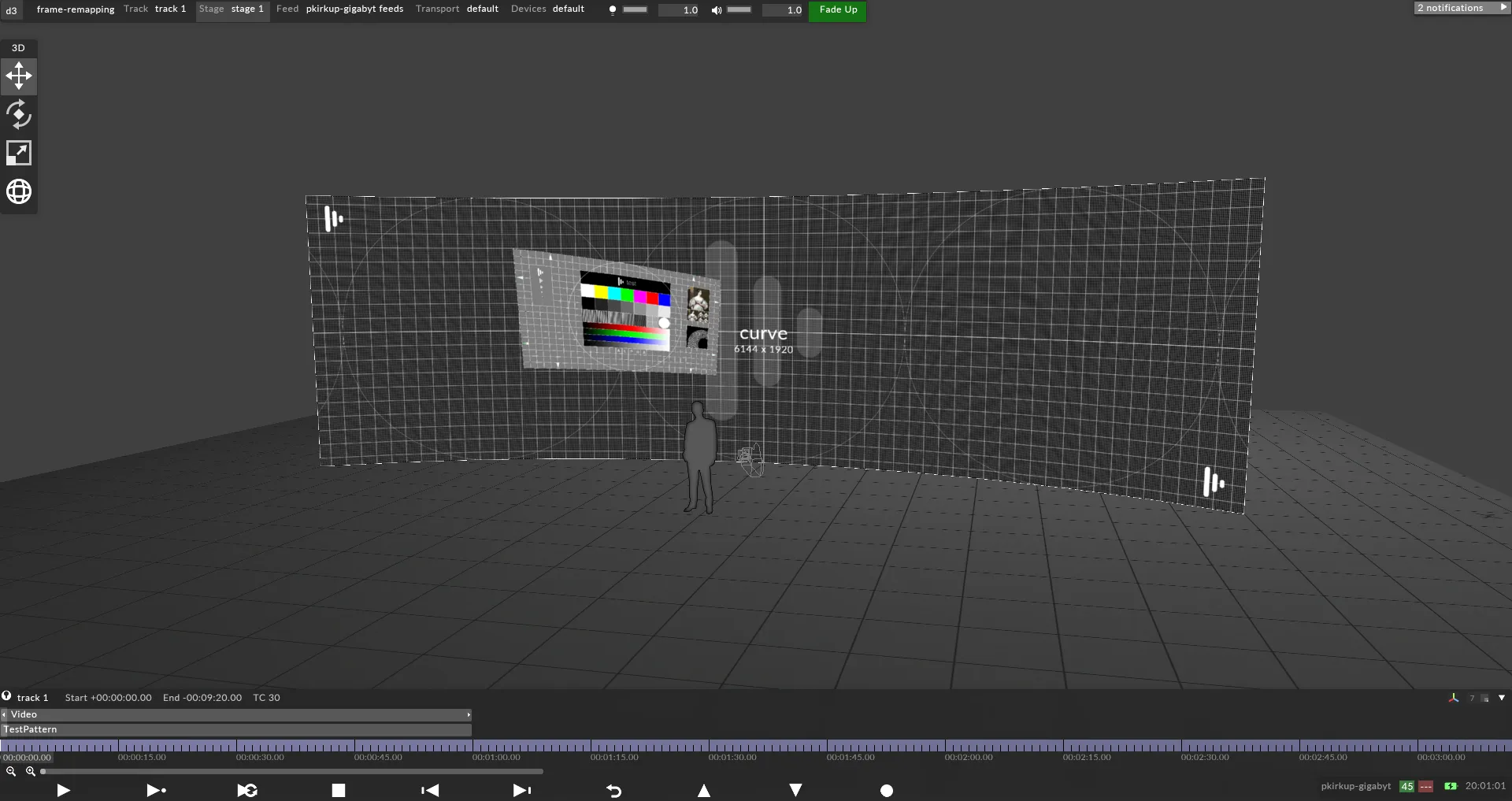
- This is mapped out of a vx 4 to 2x 4K capable LED processors:
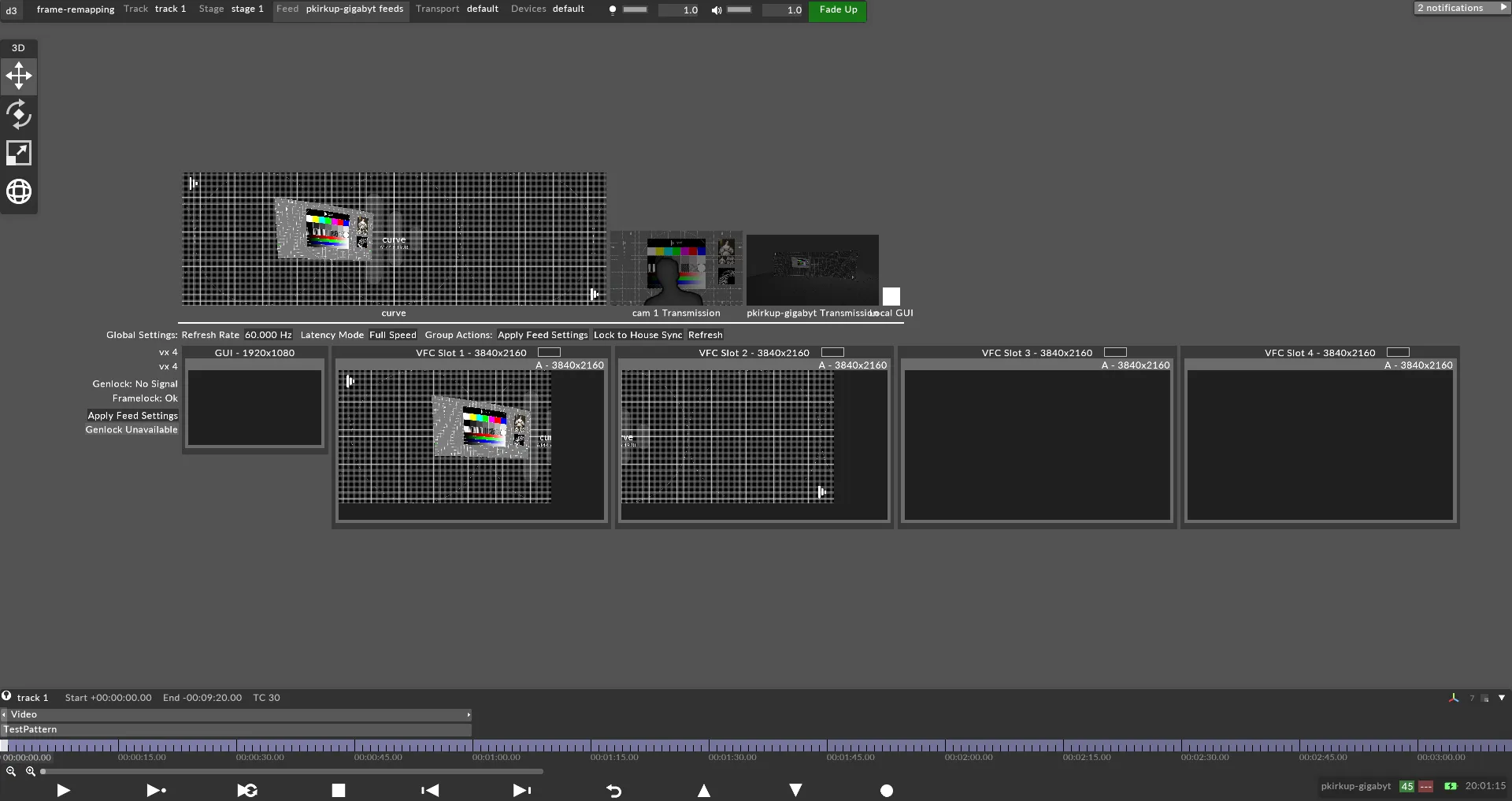
- The LED screen and camera are connected together in a single MRset object. This is the standard workflow, and everything so far is normal:
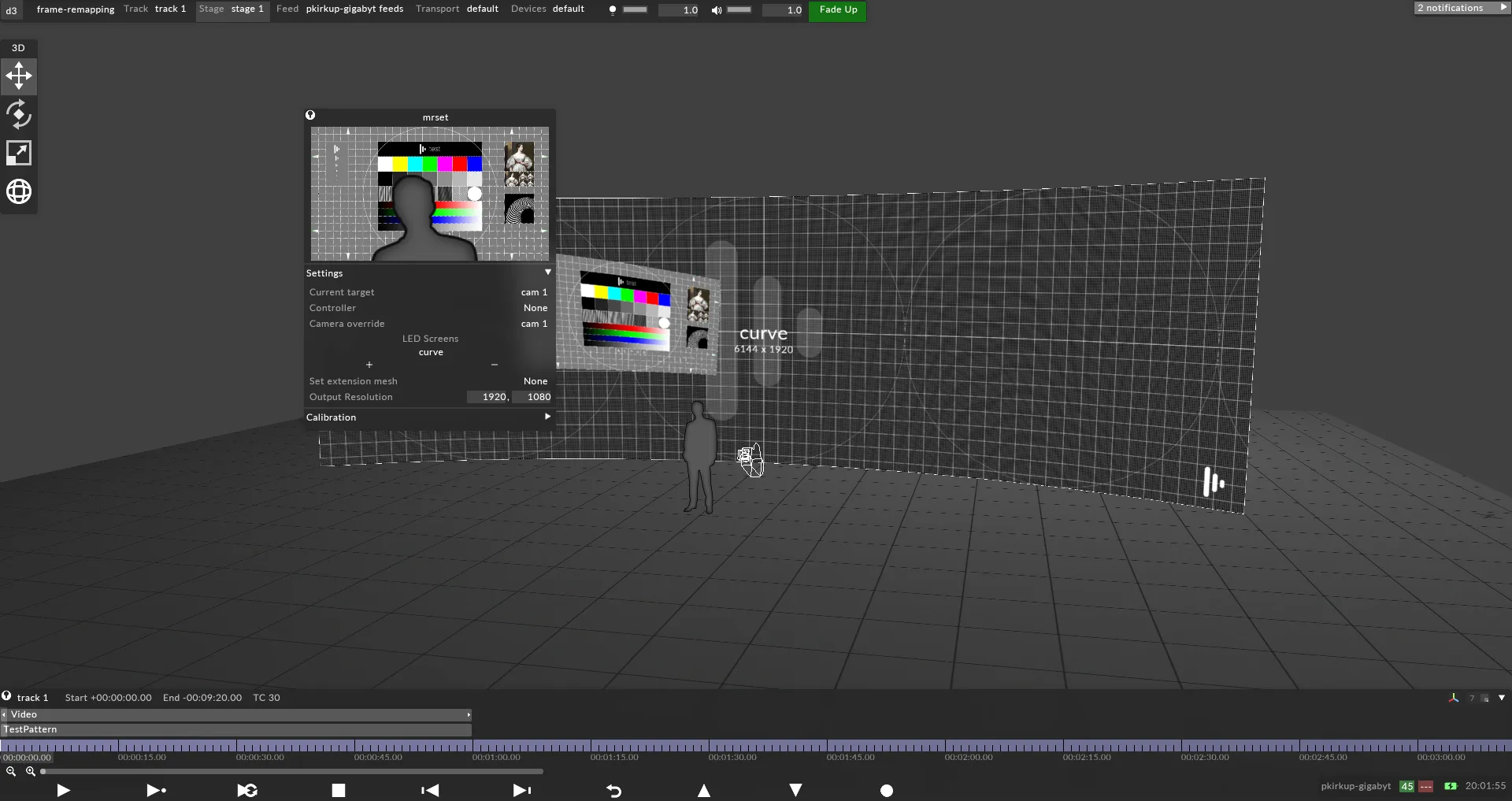
- Next, place a second LED screen on top of the first one (set to Alpha blend, and with 50% alpha).
- This allows us to pre-viz the overall effect of the frame remapping. Two LED screens placed on top of each other:
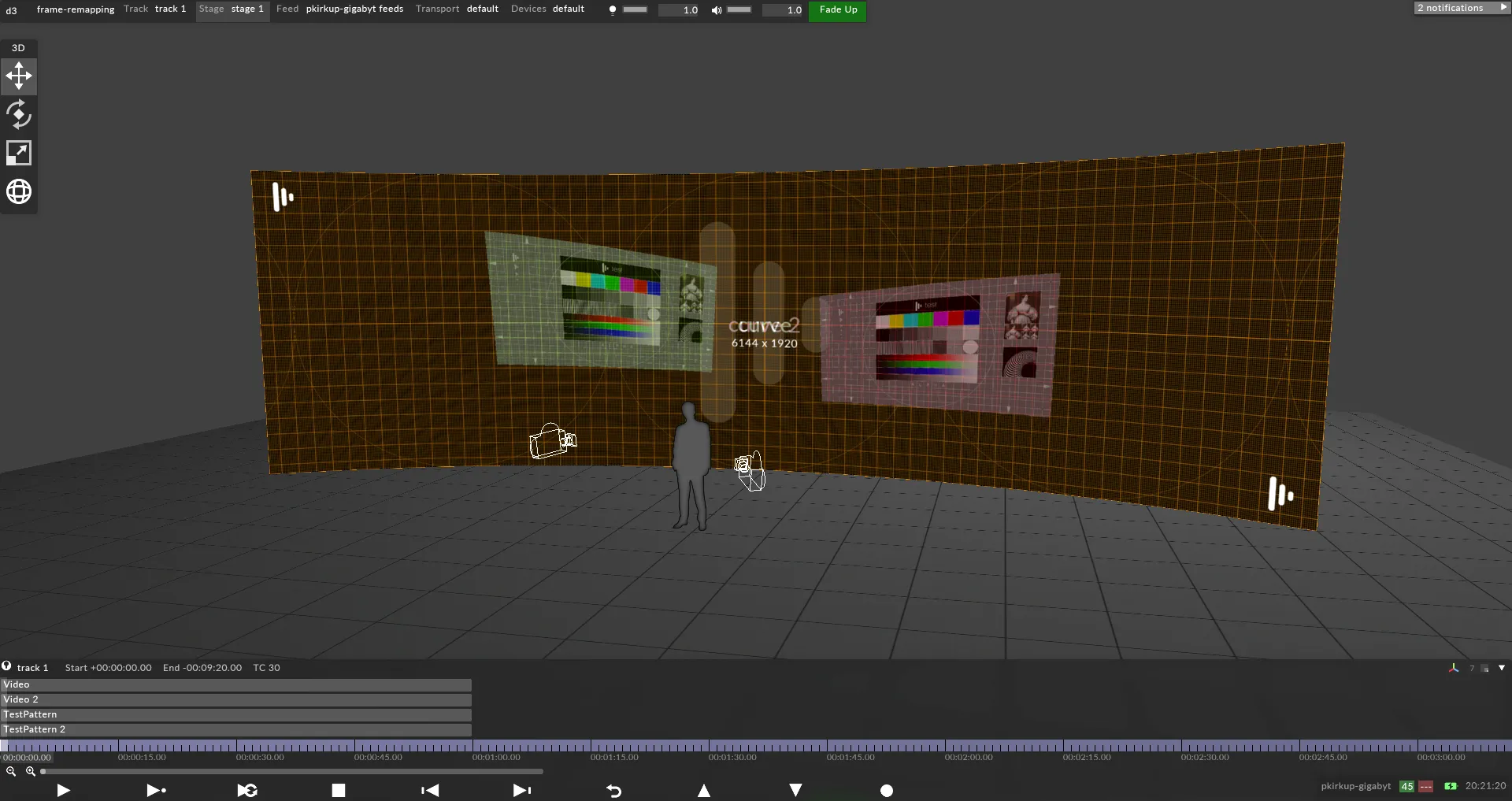
- Create a second MRset with the new LED screen and a new camera.
- Since we can use two MRsets, the two cameras will only see their own content (although it will be at 50% alpha)::
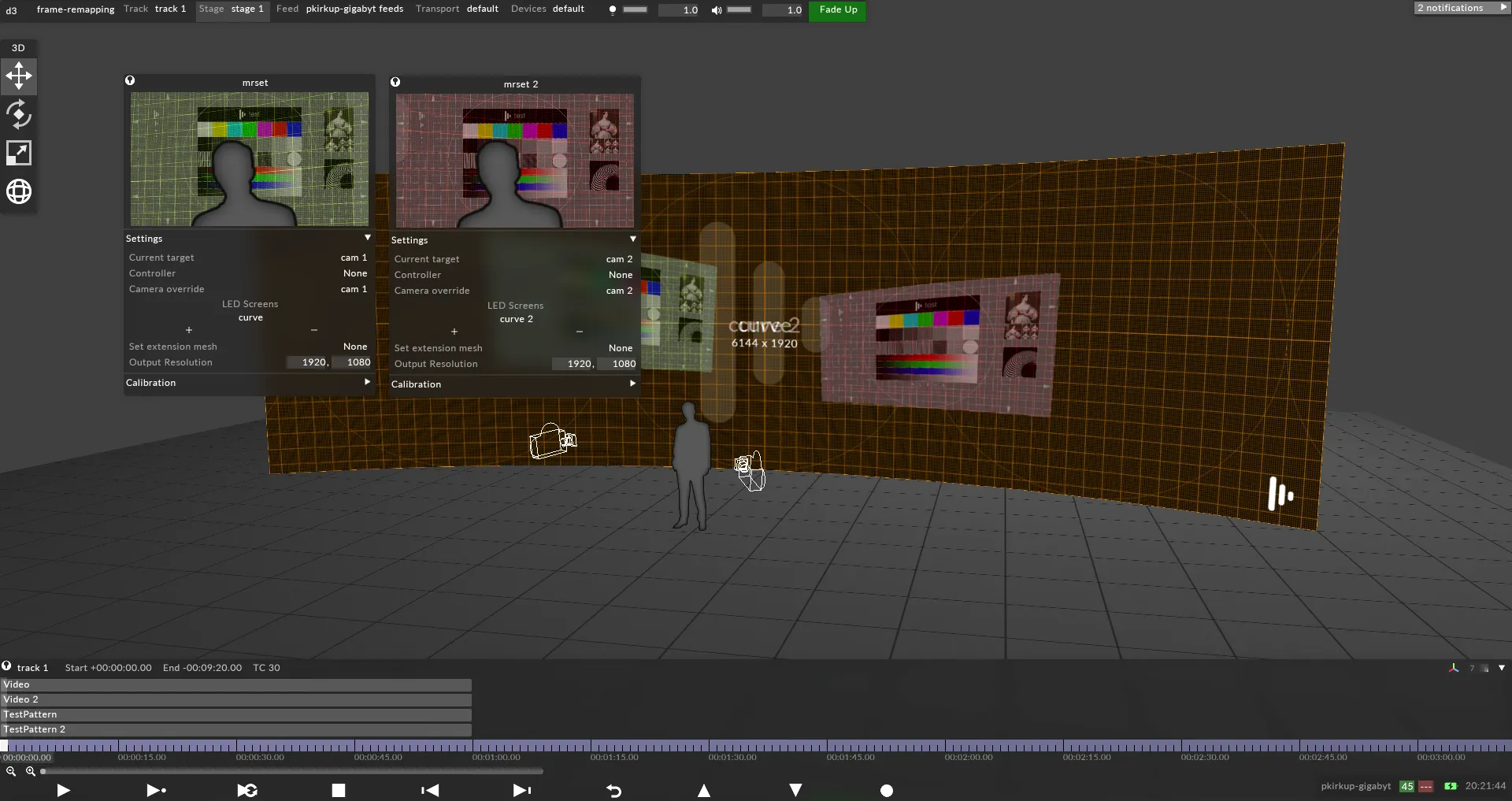
- Example#1: Brompton Frame Remapping
Once configured in the Feed output window, the video will be output on top and bottom fragments across 4 outputs on the VX 4 -with the top representing LED screen 1 and the bottom representing LED screen 2.

Example#2: Megapixel GhostFrame
Once configured in the Feed output window, the video will be output on left and right fragments across 4 outputs on the VX 4 -with left representing LED screen 1 and right representing LED screen 2.

In the LED processor software, the regions sampled for the multiple frames should match the Disguise output feed rectangles.